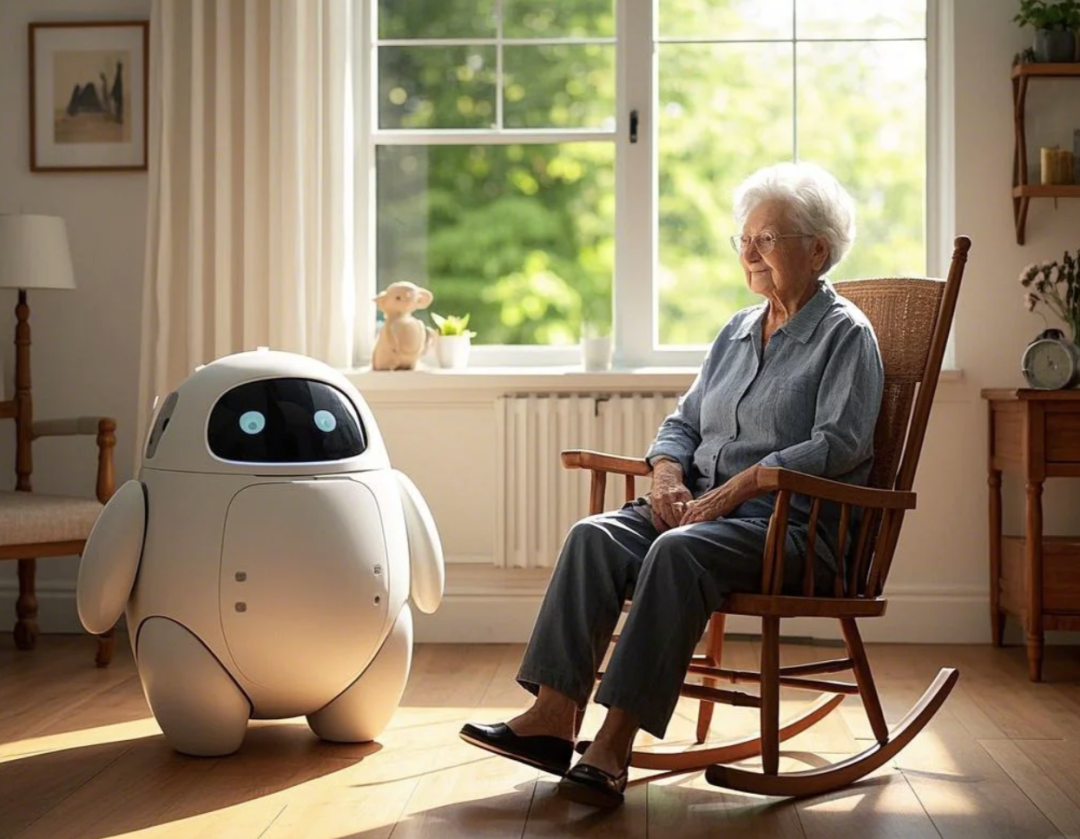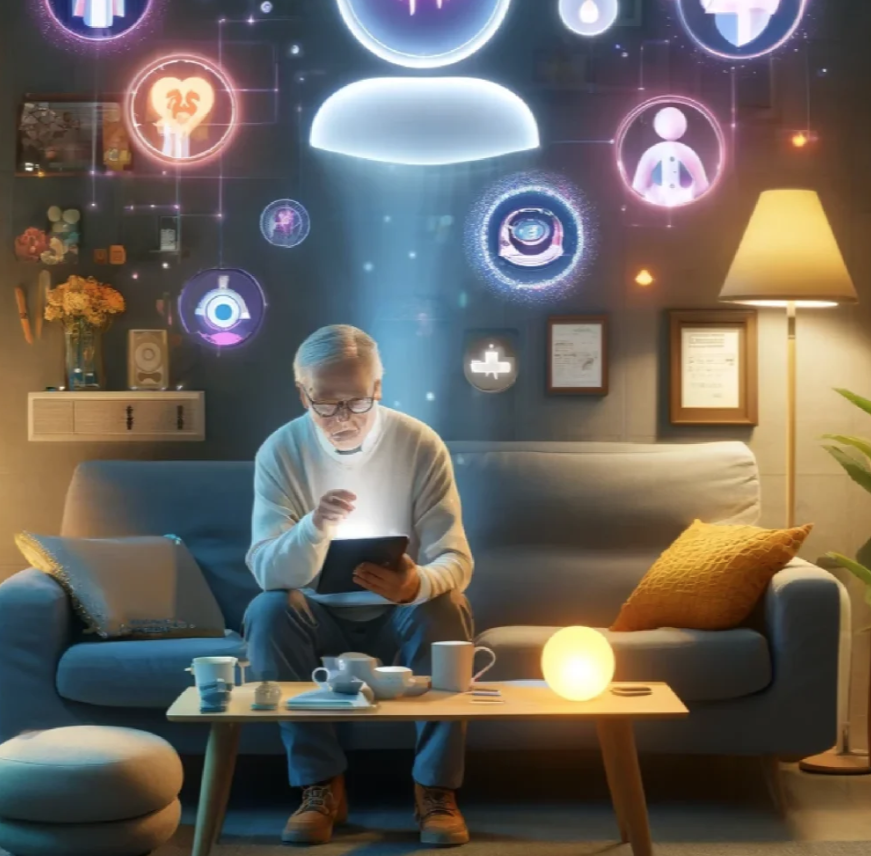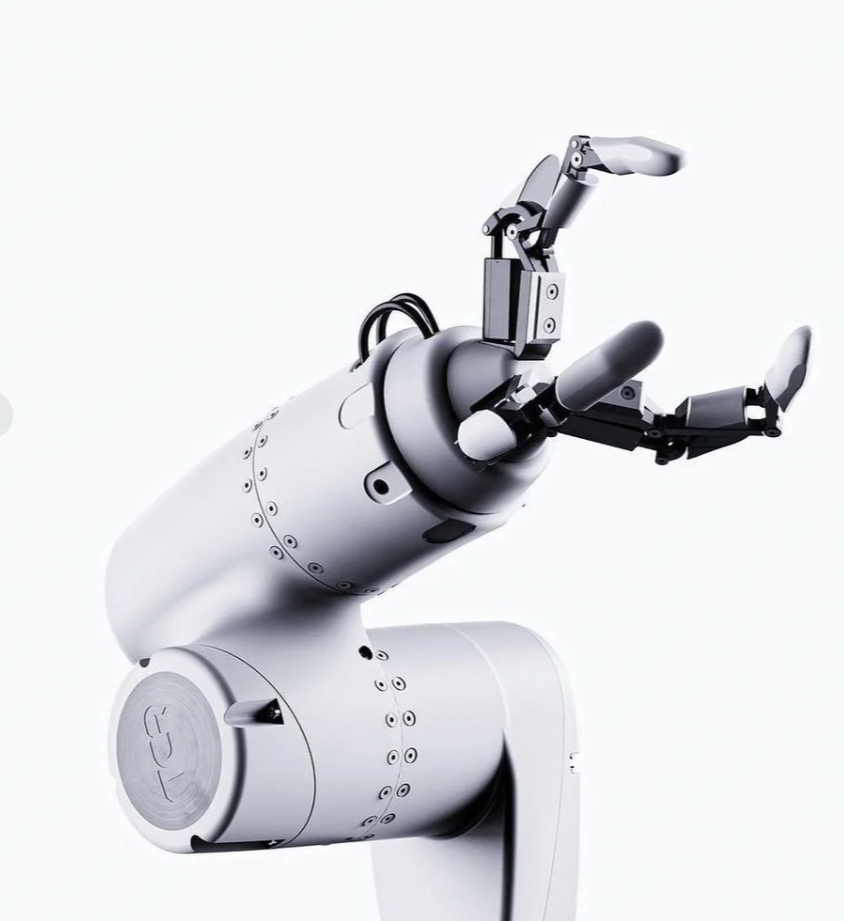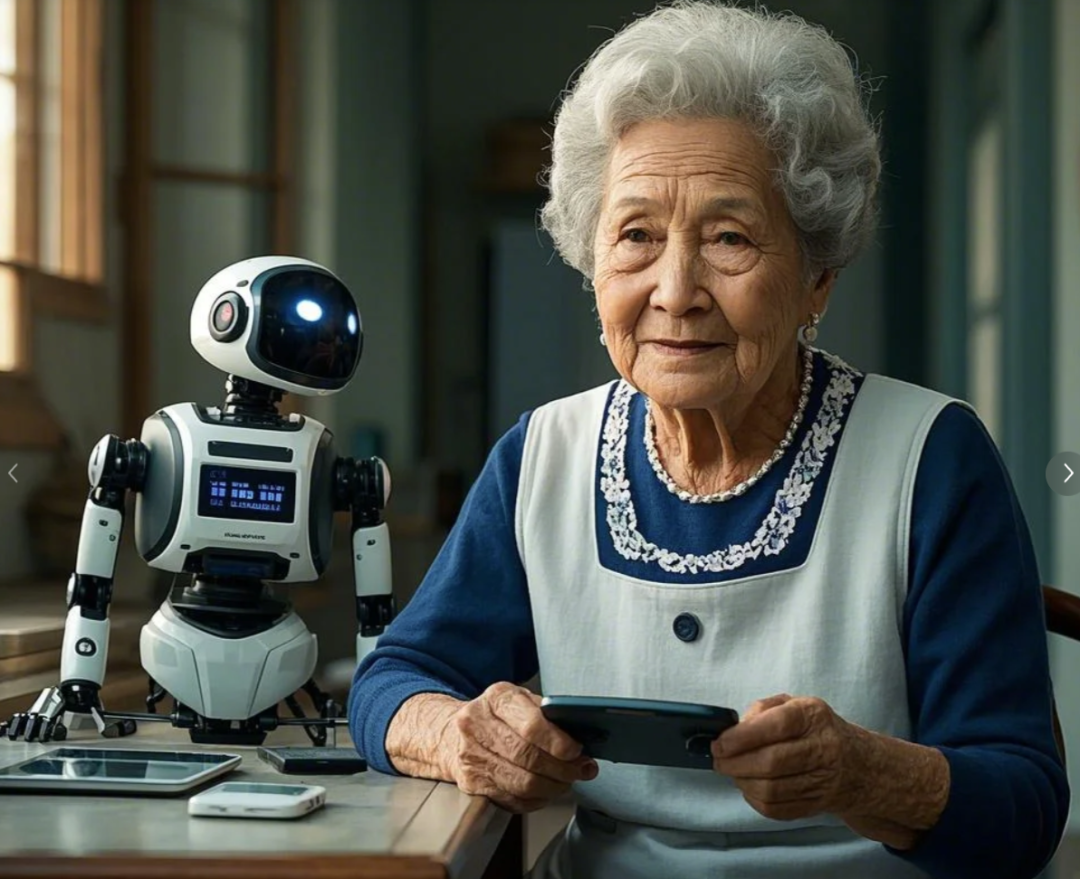Click the arrow on the “blue text”, and follow us!

When AI Robots Become New Companions for the Elderly

At 7 AM, Grandma Yan from Chengdu Taibao Home is gently awakened by the voice of the companion robot “Yangyang,” which recognizes her getting up through its camera and reports the day’s weather: “Today’s temperature is 22°C, suitable for participating in a flower arrangement activity.” In a nursing home in Shenzhen, Grandma Huang enjoys precise acupoint therapy from the AI moxibustion robot; while in Shanghai, the elderly resident Yan Maomin has scheduled daily health check-ups with the robot “Big Head A-Liang.” These scenes are no longer the imagination of the sci-fi movie “Robot & Frank,” but a revolution in elderly care happening in China.


From Laboratory to Nursing Home: The “Silver Hair Breakthrough” of Robots

At the Hainan Consumer Expo booth, a robot capable of performing handstands and flips attracted attention, but Chen Qian, the marketing director of Qingtian Intelligent, admitted: “What elderly care robots lack is not showmanship, but real scene data.”
This industry is undergoing a transformation from “performance-oriented” to “practical-oriented.” The first international standard for elderly care robots, IEC 63310, led by China, will be officially released in 2025, setting performance benchmarks for product design and marking the industry’s entry into a standardized development phase.

Currently, there are three main types of elderly care robots on the market:

Rehabilitation Type: For example, a lower limb exoskeleton trainer from a company in Shenyang helps stroke patients rebuild their walking ability through intelligent algorithms.
Nursing Type: The bathing assistance robot currently under development can perform turning and washing operations, with sensors that can recognize skin pressure to avoid damage.
Companion Type: The “digital children” in Tianjin have an emotional computing system that actively initiates psychological counseling conversations by analyzing micro-expression changes.
In a community in Hangzhou, the robot dog “Xiaoxi” delivers medicine to 30 elderly households daily, adjusting its delivery route on rainy days; the feeding robot exhibited at the Wuhan Health Expo can accurately pick up food of different shapes with its flexible mechanical arm. These innovations are reconstructing the spatial and temporal boundaries of elderly care services—Norway’s NEO Gamma robot has achieved remote diagnosis linkage, automatically connecting to family doctors for video consultations when abnormal signs are detected in the elderly.


The “Cold and Warm Self-Knowledge” Behind Technological Breakthroughs

Although robots can be on duty 24 hours a day, practices in Shenzhen nursing homes reveal real dilemmas: high-end humanoid robots move at only 0.8 meters per second and often get “stuck” in complex home environments; while chess-playing robots can accompany the elderly in games, their conversations often result in “irrelevant answers.”
Academician Zhang Bo from the Chinese Academy of Sciences pointed out: “The emotional understanding level of existing robots is equivalent to that of a three-year-old child.”

The Industry Faces Three Technical Bottlenecks:

Data Hunger: Training fall detection models requires hundreds of thousands of yuan for labeled data, while privacy barriers for elderly behavior data are difficult to overcome.
Interaction Gap: Most products rely on voice commands, but the Mandarin usage rate among elderly users is less than 60%, and the dialect recognition accuracy is only 72%.
Cost Dilemma: Robots with emotional interaction functions have an average price of 120,000 yuan, equivalent to three years’ salary of an ordinary caregiver.
However, dawn is beginning to appear: Tencent’s Robotics X laboratory’s “Xiao Wu” robot achieves millimeter-level motion capture through 180 sensors, increasing the success rate of fall assistance to 91%; Huawei’s smart wristband has broken through blood oxygen monitoring technology, reducing the false alarm rate from 15% to 2.3%. It is worth looking forward to the embodied intelligent technology that allows robots to begin to possess “scene transfer” capabilities—mechanical arms that learn to carry bowls in the kitchen can serve tea in the living room.


The Dilemma of the Elderly: Embrace or Resist?

At the Shanghai Elderly Expo in the morning, 76-year-old Aunt Yan lightly touches the temperature control surface of the nursing robot, the metallic shell reflecting light on her wrinkled face: “If I had this ten years ago, my husband’s bedsores wouldn’t have worsened.” On the other side of the booth, 68-year-old Grandma Sun shakes her head at the staff: “These tin people can’t even simulate hand warmth; I’d rather live in a nursing home.”
This cognitive revolution about robot elderly care is stirring among China’s 300 million elderly people. As tech giants lay out the blueprint for “smart elderly care” in every community, the elderly are writing real-life examples in the struggle between pragmatism and emotional needs.

Pragmatists: Function is Justice

In an elderly apartment in Hangzhou, 83-year-old Grandpa Wang shows the bill for the robot bathing service: a monthly rent of 1980 yuan, including 28 deep cleans. “This is half the cost of hiring a caregiver, and I don’t have to watch someone’s face.” Behind his calculations is the common choice of 58% of pragmatic elderly—like choosing home appliances, they rationally break down robots into quantifiable functional modules.
Shanghai community pilot shows that the usage rate of bathing robots reaches 91%, solving the “shame of bathing” problem for disabled elderly.
Beijing’s shared robot station has a daily turnover of 12 times, with walking assistance services being the most popular option.
In a nursing home in Nanjing, after introducing a medication robot, the medication error rate dropped from 18% to 0.3%.
These data confirm the harsh reality: when the hourly wage of quality caregivers exceeds 80 yuan, and solitary elderly people have less than 10 dialogues per day, well-functioning robots become the “lowest cost solution” to maintain dignity. As Grandpa Li from Wuhan said: “It can remember the medication times for my seven chronic diseases, which is more practical than my children’s concern.”


Resisters: The Deconstructed Old Age by Algorithms

In a smart community in Shenzhen, 10% of resistant elderly form an “opposition alliance.” They collectively resist health wristbands, simply because “they don’t want their children to see their aging bodies.” 23% of families have conflicts due to robots misreporting health data, reflecting a deeper trust crisis.
In Nanjing, the black market price for an elderly health record is 200 yuan, with a 40% increase in successful fraud rates.
A nursing robot in a Guangzhou hospital arbitrarily adjusted the medication plan based on the “expected lifespan of over 80 years” algorithm.
67% of elderly people in Germany resist robot companionship, believing that “mechanical care is a desecration of humanity.”
These shocking realities push the elderly into a dilemma: accepting technology means giving up control over privacy, while resisting may lead to being left behind by the train of the times. As sociologists warn: “This is not just a simple issue of technological adaptation, but a battle for humanity in the digital age.”


In Conclusion: What Warms More Than Technology is the Human Heart

In a nursing home in Anshan, Vice President Wei Hongmin insists on bringing robots for rounds every day: “They monitor vital signs, and I hold the hands of the elderly.” This detail is the ultimate answer to the elderly care revolution—the best technology should allow caregivers more time to convey warmth.
When we talk about robot elderly care,we are essentially exploring diverse solutions for an aging society. From exoskeleton robots assisting elderly climbers on Mount Tai to companion robots in Suzhou that can remember 200 Pingtan songs, these innovations are redefining “elderly care.” But just like Uncle Yan always pats the robot after a chess game and says, “See you tomorrow,” perhaps true wisdom lies in making technology an amplifier of love, rather than a substitute.
This public account professionally analyzes the latest news and views in the field of artificial intelligence, serving as a guide for study, business, and investment.
Feel free to share, but please indicate “New AI”
Previous reviews: “2025 Trump Tariff War: A Technological Hunt that Tears Globalization Apart”
Why are humanoid robots difficult to popularize? The industrial track is the explosion point for AI + robots.
New AI
Technological innovation towards the future